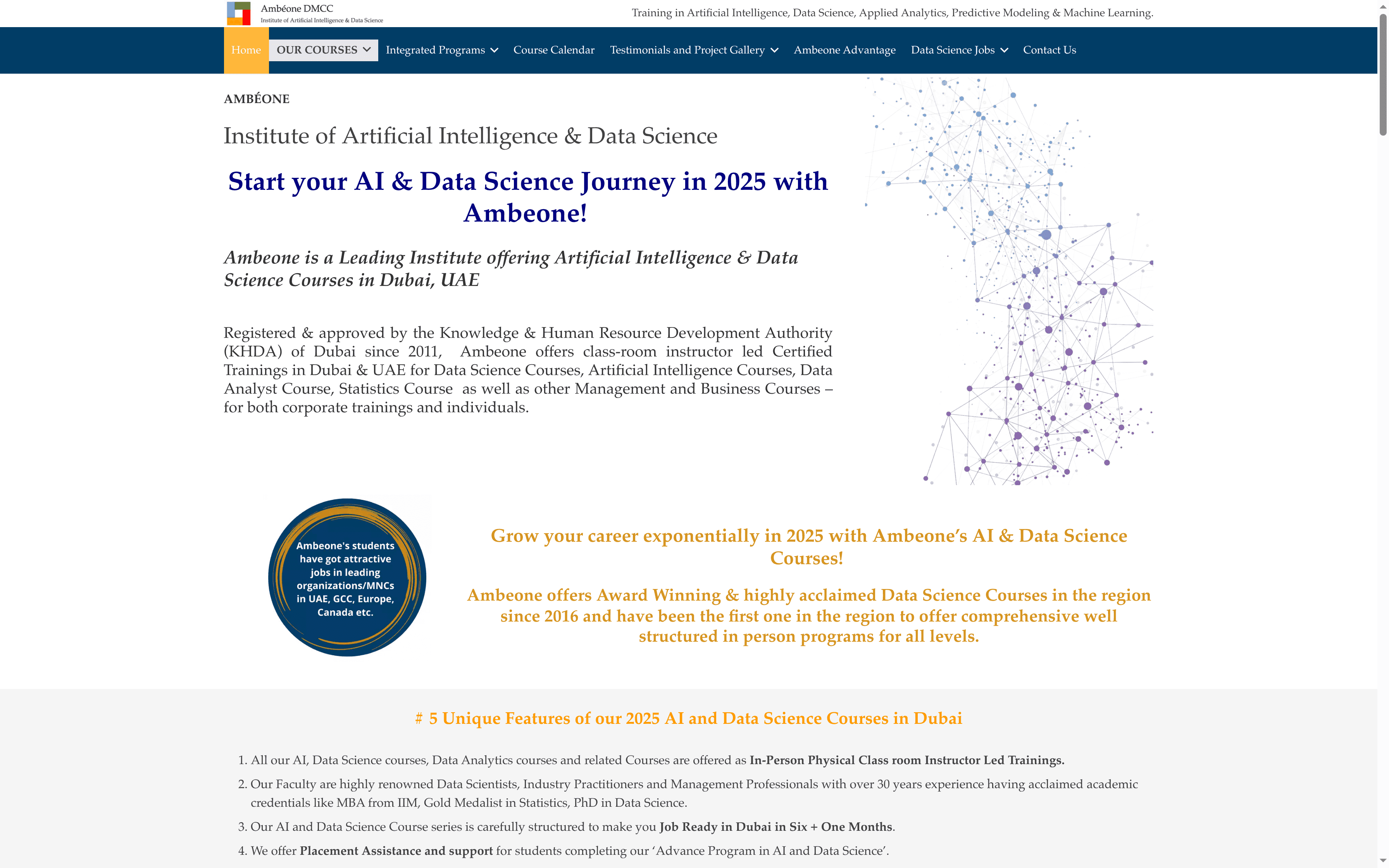The Essential Guide to Why Study Data Analytics
Over ninety percent of the world’s data has been created in just the last two years, which means finding meaning in the noise is more vital than ever. Businesses and individuals rely on data analytics to move beyond guesswork and make decisions that truly matter. Understanding its core purpose gives anyone a competitive edge, revealing how raw numbers transform into insights that drive smarter strategies across every industry.
Table of Contents
- Defining Data Analytics And Its Core Purpose
- Types Of Data Analytics And Their Functions
- Key Skills And Industry Requirements Explained
- Career Benefits For Professionals And Businesses
- Common Challenges And Mistakes To Avoid
Key Takeaways
| Point | Details |
|---|---|
| Core Purpose of Data Analytics | Data analytics aims to transform raw data into actionable insights that support strategic decision-making across various industries. |
| Types of Data Analytics | The four main types—Descriptive, Diagnostic, Predictive, and Prescriptive—each serve unique functions in understanding and leveraging data for business strategy. |
| Essential Skills for Analysts | Professionals need a blend of technical skills (like programming and statistical analysis) and soft skills (such as critical thinking and effective communication) for success in data analytics. |
| Challenges and Mistakes | Key challenges include data quality issues and misinterpretation, while critical mistakes involve neglecting data governance and misaligning analytics with business objectives. |
Defining Data Analytics And Its Core Purpose
Data analytics represents a powerful approach to transforming raw information into meaningful insights that drive strategic decision-making. Data analytics is the systematic computational process of examining complex data sets to uncover hidden patterns, correlations, and trends that organizations can leverage for competitive advantage.
According to Wikipedia, analytics is “the systematic computational analysis of data or statistics, used for the discovery, interpretation, and communication of meaningful patterns in data.” This definition highlights the fundamental goal: converting abstract numerical information into actionable intelligence. The core purpose extends beyond mere number-crunching to providing strategic guidance across multiple domains.
In practical terms, data analytics involves several critical processes:
- Data Collection: Gathering relevant information from diverse sources
- Data Cleaning: Preparing and standardizing raw data for accurate analysis
- Statistical Modeling: Applying mathematical techniques to identify underlying trends
- Visualization: Presenting complex findings through intuitive graphics and charts
- Predictive Insights: Forecasting potential future scenarios based on historical data
The relevance of data analytics becomes even more pronounced when understanding its applications. Business Intelligence vs. Data Analytics demonstrates how these techniques can transform organizational strategy. From healthcare and finance to marketing and technology, data analytics provides a systematic framework for understanding complex systems and making informed decisions.
At its essence, data analytics bridges the gap between raw information and strategic understanding. By converting abstract numbers into meaningful narratives, professionals can unlock unprecedented insights that drive innovation, efficiency, and competitive advantage across industries.
Types Of Data Analytics And Their Functions
Data analytics is not a one-size-fits-all approach, but a sophisticated ecosystem of analytical techniques designed to extract meaningful insights from complex data sets. Analytical strategies vary significantly, each serving a unique purpose in transforming raw information into strategic intelligence.
According to GeeksforGeeks, there are four major types of data analytics, each with distinct functions and strategic applications:
- Descriptive Analytics
- Focuses on summarizing historical data
- Provides insights into past performance
- Used in business intelligence and data mining
- Answers “What happened?”
- Diagnostic Analytics
- Examines why specific events or outcomes occurred
- Investigates root causes and correlations
- Helps understand underlying patterns
- Answers “Why did it happen?”
- Predictive Analytics
- Forecasts future trends and potential scenarios
- Uses statistical models and machine learning
- Enables proactive decision-making
- Answers “What might happen?”
- Prescriptive Analytics
- Recommends specific actions based on predictive insights
- Provides optimization strategies
- Involves complex simulation techniques
- Answers “What should we do?”
In the context of business strategy, Business Analytics Using Data Science demonstrates how these analytical approaches can be seamlessly integrated to drive organizational performance. By understanding and leveraging these different types of analytics, professionals can transform data from a passive resource into an active strategic tool.
Each type of data analytics builds upon the previous one, creating a comprehensive framework for understanding complex systems. From descriptive snapshots to prescriptive recommendations, these techniques enable organizations to move beyond reactive approaches and embrace data-driven, forward-looking strategies that anticipate and shape future outcomes.

Here’s a comparison of the four main types of data analytics and their functions:
![]()
| Type of Analytics | Main Focus | Key Question | Primary Application |
|---|---|---|---|
| Descriptive | Summarize historical data | What happened? | Performance reviews Reporting |
| Diagnostic | Investigate causes | Why did it happen? | Root cause analysis Audit |
| Predictive | Forecast future trends | What might happen? | Risk assessment Trend analysis |
| Prescriptive | Recommend optimal actions | What should we do? | Strategic planning Optimization |
Key Skills And Industry Requirements Explained
Succeeding in data analytics requires a sophisticated blend of technical prowess, analytical thinking, and strategic communication skills. Professional data analysts must navigate a complex landscape of technological tools, mathematical principles, and business intelligence methodologies.
According to Indeed, key skills in data analytics encompass a multifaceted skill set that goes beyond traditional technical capabilities. Professionals must demonstrate proficiency in:
Technical Skills
- Programming Languages: Python, R, SQL
- Statistical Analysis: Advanced mathematical modeling
- Machine Learning Algorithms: Predictive and prescriptive modeling
- Data Visualization: Creating compelling visual narratives
- Database Management: Handling complex data infrastructures
Soft Skills
- Critical thinking and problem-solving
- Effective communication
- Strategic decision-making
- Cross-functional collaboration
- Complex problem interpretation
Modern organizations seek data analytics professionals who can bridge technical complexity with strategic insights. Top Skills for Data Analysts highlights the importance of developing a comprehensive skill set that combines technological expertise with business acumen.
Industry requirements continue to evolve, demanding professionals who can transform raw data into actionable intelligence. By mastering both technical and interpersonal skills, data analytics practitioners can position themselves as invaluable strategic assets in an increasingly data-driven professional landscape.
Career Benefits For Professionals And Businesses
Data analytics has emerged as a transformative career path that offers unprecedented opportunities for both individual professionals and organizational growth. The landscape of modern business is increasingly driven by data-powered insights, creating a symbiotic relationship between analytical expertise and strategic success.
According to SCNSoft, professionals skilled in data analytics can drive business growth by providing insights that inform strategic decisions, leading to improved efficiency, competitive advantage, and innovation within organizations.
Benefits for Professionals
- Highly competitive salary ranges
- Diverse career opportunities across industries
- Continuous learning and skill development
- Global career mobility
- Potential for rapid career advancement
Benefits for Businesses
- Data-driven strategic decision-making
- Enhanced operational efficiency
- Predictive problem-solving capabilities
- Competitive market intelligence
- Risk mitigation and management
Seven Ways Data Science can help any Business demonstrates the profound impact analytics professionals can have on organizational performance. As noted by Indeed, data analytics offers professionals opportunities to work across various industries and contribute to pivotal business strategies.
The convergence of technological innovation and strategic insight positions data analytics as more than just a career—it’s a dynamic pathway to reshaping how businesses understand, predict, and optimize their operational potential. Professionals who master these skills become invaluable architects of organizational transformation, bridging the gap between raw data and strategic excellence.
Common Challenges And Mistakes To Avoid
Data analytics is a complex field where even seasoned professionals can encounter significant pitfalls that compromise the integrity and effectiveness of their analytical efforts. Navigating these challenges requires a strategic approach, keen awareness, and proactive problem-solving skills.
According to FutureLearn, common challenges in data analytics include critical issues such as data quality problems, misinterpretation of data, and overreliance on historical information without considering current market dynamics.
Key Challenges to Anticipate
- Data Quality Issues
- Incomplete or inconsistent data sets
- Outdated information
- Unverified data sources
- Interpretation Errors
- Cognitive biases
- Statistical misunderstandings
- Correlation vs. causation mistakes
- Technical Limitations
- Inadequate technological infrastructure
- Software compatibility problems
- Limited computational resources
Critical Mistakes to Avoid
- Neglecting data privacy regulations
- Failing to align analytics with business objectives
- Underestimating the importance of data governance
- Overlooking context in data interpretation
- Relying exclusively on automated insights
As SCNSoft highlights, organizations must be vigilant about potential pitfalls that can undermine their analytics initiatives. How Data Science Helps Business provides additional insights into navigating these complex challenges.
Successful data analytics professionals understand that technical skills are only part of the equation. Developing a holistic approach that combines technical expertise, critical thinking, and strategic awareness is crucial for transforming potential challenges into opportunities for meaningful insights and organizational growth.
Unlock Your Future with Expert Data Analytics Training
The article highlights the challenges of mastering diverse data analytics techniques and skills such as predictive modeling, statistical analysis, and effective communication. If you are eager to overcome these challenges and gain practical, industry-relevant expertise, then exploring targeted education is essential. Whether you want to answer critical questions like “What might happen?” or “What should we do?” mastering these skills can unlock your potential and transform your career.

Discover tailored learning paths with Uncategorized Archives – Ambeone designed for professionals like you who want hands-on training in artificial intelligence, data science, and applied analytics. By joining Ambeone, a KHDA-approved platform in Dubai, you gain access to instructor-led courses that equip you with the cutting-edge tools and strategic insight needed to turn raw data into actionable success. Take the next step today and start shaping your future with comprehensive training that aligns perfectly with your aspirations.
Frequently Asked Questions
What is data analytics?
Data analytics is the systematic computational process of examining complex data sets to uncover hidden patterns, correlations, and trends that help organizations make strategic decisions.
What are the main types of data analytics?
The four main types of data analytics are descriptive analytics (summarizing historical data), diagnostic analytics (examining causes of events), predictive analytics (forecasting future trends), and prescriptive analytics (recommending optimal actions).
What skills are needed to succeed in data analytics?
Key skills for data analysts include proficiency in programming languages (like Python, R, SQL), statistical analysis, machine learning, data visualization, and strong soft skills such as critical thinking and effective communication.
What are the benefits of studying data analytics for professionals?
Studying data analytics offers several benefits, including competitive salaries, diverse career opportunities, continuous learning, global career mobility, and potential for rapid advancement in various industries.
Recommended
- Can I become a Data Scientist? Find popular myths vs reality!
- Why Data Science Course and Certifications are important?
- Find out if Data Scientist is the Sexiest Job of 21st Century?
- Understanding Music Analytics Best Practices for Success – Blog – Music24.com
- 7 Types of AI-Driven Tasks for Business Success

